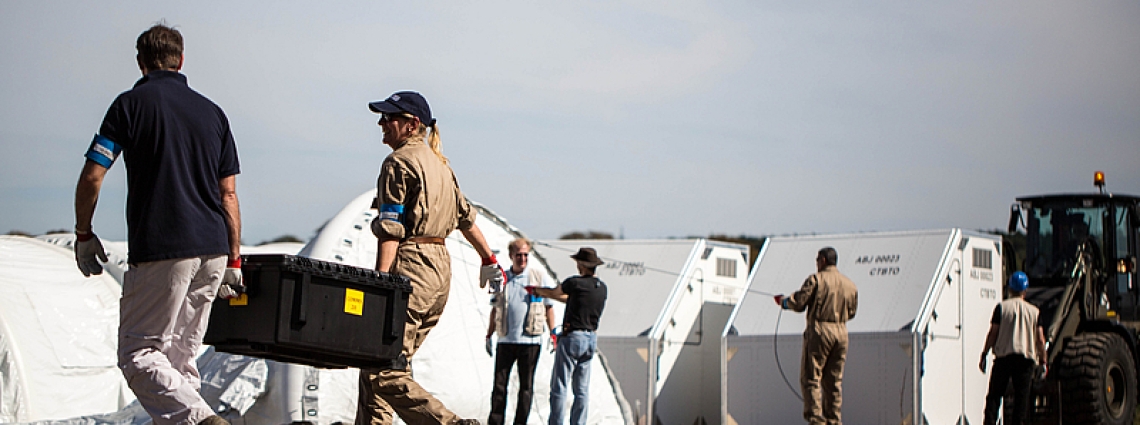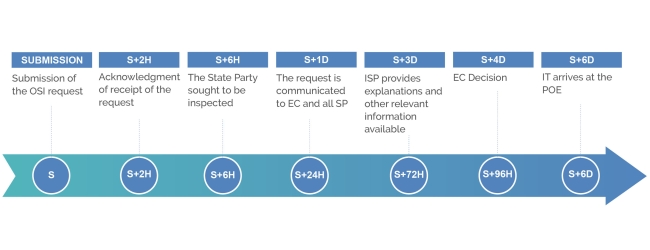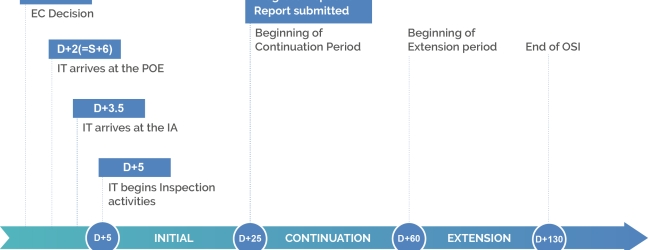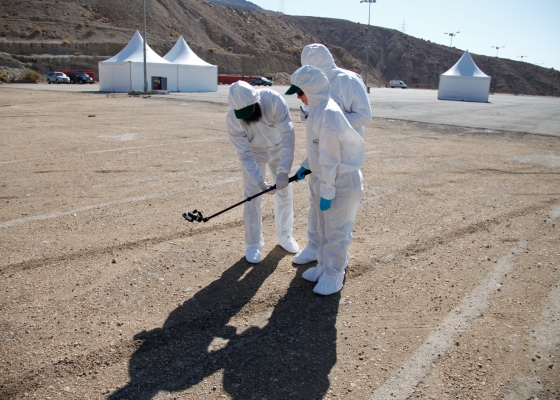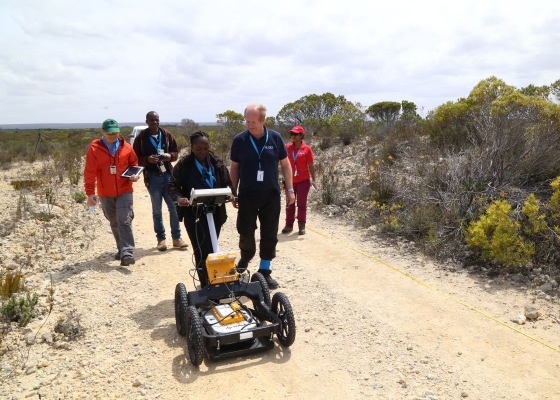Overview of an On-Site Inspection
An OSI can be broken down into four distinct phases which reflect the time frames and locations of inspection activities specified in the Treaty. These are outlined below.
Launch Phase
The launch phase starts with the submission of an OSI request from a State Party on the basis of a suspicious triggering event. Any State Party can request an OSI based upon data collected through the IMS or produced by national technical means. The Executive Council will make a decision within 96 hours of its receipt of the request, should it be ascertained that the request meets the relevant Treaty provisions. Upon receipt of the request, the OSC at CTBTO headquarters is activated. Its role is to initiate all administrative and operational tasks to support the preparation of the inspection team and to deploy the team and its equipment to the point of entry of the potential inspected State Party (ISP) within six days of the receipt of the OSI request.
Pre-Inspection Phase
The pre-inspection phase is 72 hours in length and starts with the arrival of the inspection team at the point of entry. The first 36 hours cover handover of the inspection mandate to the ISP representative, conduct of briefings and initial negotiations between the ISP and the inspection team, presentation of the initial inspection plan, equipment checking and clearance, and the subsequent transfer of the team and its equipment to the inspection area. During the second 36 hours, the inspection team works to establish the base of operations and prepare to conduct inspection activities.
Inspection Phase
The inspection phase starts with an initial period of up to 25 days from the approval of the inspection, during which a limited set of techniques can be used. The inspection team should submit a progress inspection report to the Executive Council, through the Director-General, prior to the conclusion of the initial period. If after reviewing the progress inspection report the Executive Council does not decide to stop the inspection, the inspection moves to a continuation period, during which all OSI techniques allowed under the Treaty, with the exception of drilling, can be utilized. The continuation period can last up to the limit of 60 days after the date of the approval of the inspection request, with a possible extension of a further 70 days requiring the approval of the Executive Council. Drilling for radioactive samples requires a special approval by the Executive Council; the inspection team can request the Executive Council to approve drilling at any time during the inspection phase.
Post-Inspection Phase
Once the inspection phase concludes, the inspection team has 24 hours to meet with the ISP representatives to review the preliminary findings document and to clarify any ambiguities. The ISP has the right to submit comments to the findings and must then countersign the document to indicate that they have taken note of its content. In parallel, the inspection team will dismantle the base of operations, pack all equipment and depart as soon as practically possible. The Director-General then utilizes the preliminary findings document as the basis for the inspection report, which after review by the ISP is forwarded to all States Parties and the Executive Council to assess whether non-compliance with the Treaty has occurred.
